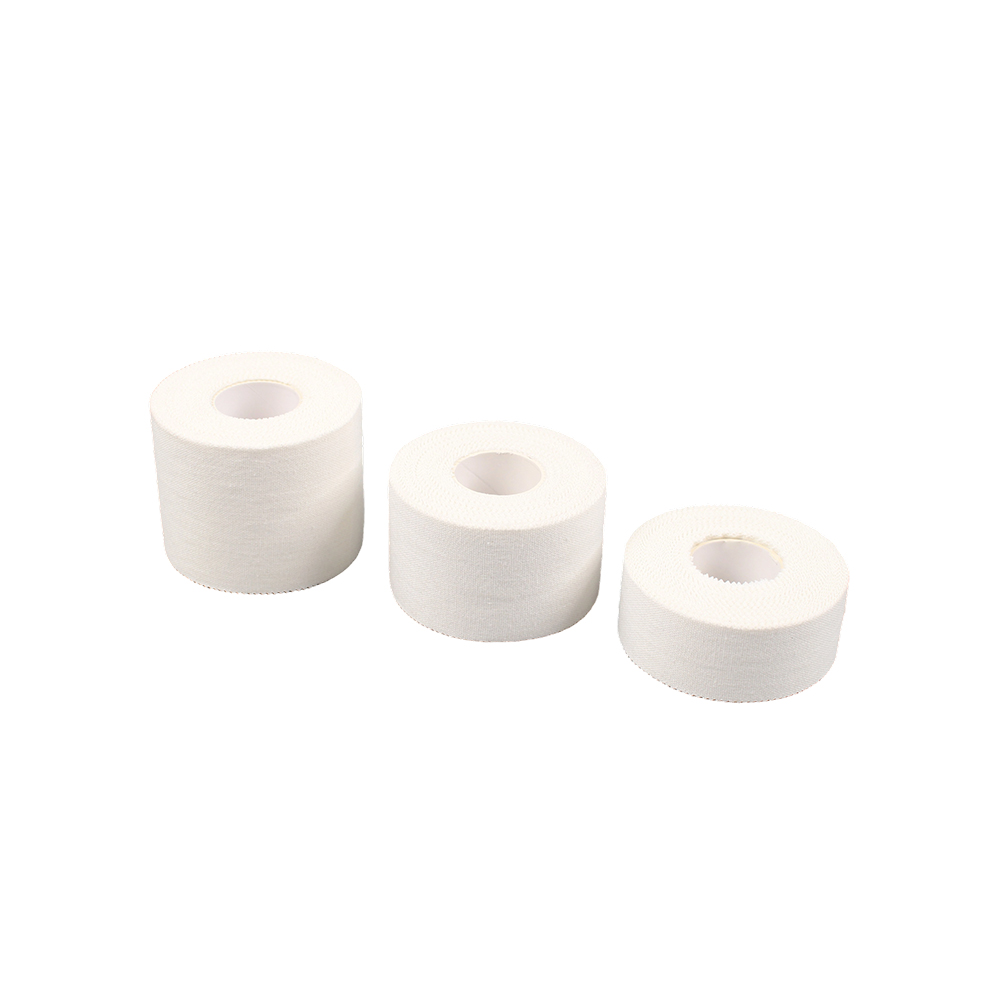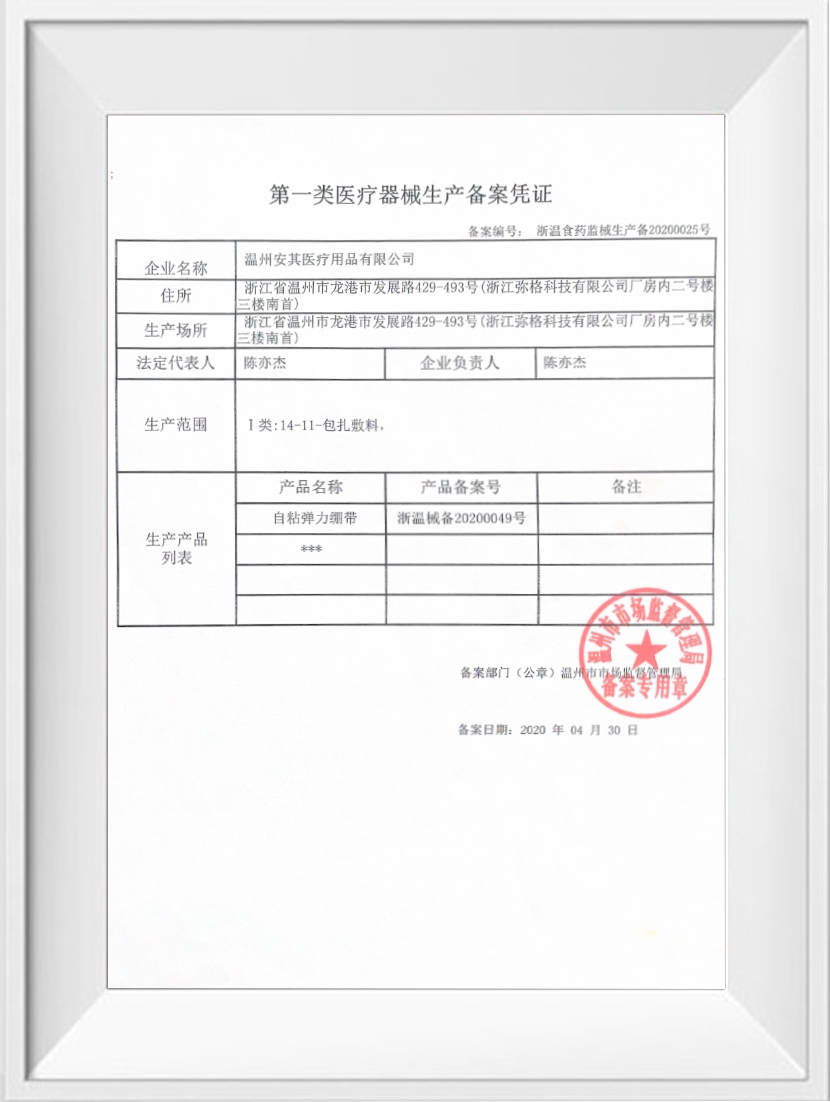Web Menu
Product Search
Exit Menu
We provide quality products and services to customers from all over the world.
How Good is the Cotton Sport Tape?
Athletic tape is a ubiquitous sight in gyms, on playing fields, and in rehabilitation clinics. Cotton sport tape, often referred to by its common name "kinesiology tape" or rigid athletic tape, has established a significant presence. Its merits, however, are not absolute but are contingent upon the specific application and the physiological goals of the user. To evaluate its effectiveness, it is necessary to dissect its performance across several key dimensions: its physical properties and primary functions, its practical applications in specific scenarios, and a clear consideration of its limitations.

Material Properties and Intended Function
Cotton sport tape is characterized by its woven fabric construction, which provides a distinct set of physical characteristics. Unlike its synthetic, elastic counterparts, traditional cotton tape offers limited longitudinal stretch. It is designed to be strong, porous, and adherent, typically requiring a specialized adhesive and a non-stretch underwrap to protect the skin during application and removal. The primary function of this type of tape is restriction and structural support. It operates on the principle of creating an external, rigid support system for joints and soft tissues.
The logic behind this is mechanical. By applying the tape in specific patterns with minimal stretch, it acts as a physical barrier that limits the range of motion of a joint. For instance, when an athlete has a weakened ankle, the tape can be applied to prevent excessive inversion—the rolling of the ankle—without completely immobilizing it. This restrictive property is its core strength. Furthermore, the cotton material is generally breathable, which can help manage moisture and reduce the risk of skin maceration compared to fully occlusive tapes. The perceived support it provides can also have a neurological effect, enhancing proprioception—the body's ability to sense its position in space—which can more mindful and stable movements.
Practical Applications and Real-World Efficacy
The value of cotton sport tape becomes evident in particular use cases where rigid support is the primary objective. Its efficacy is pronounced in two main areas: acute injury management and high-load performance.
In the context of acute injury, such as a grade I or II lateral ankle sprain, cotton tape is frequently employed by athletic trainers and physical therapists. The goal here is not to heal the ligament faster but to create a safe environment for the early stages of recovery. By mechanically limiting harmful ranges of motion, the tape allows an athlete to engage in controlled weight-bearing and rehabilitative exercises with a reduced risk of re-injury. This application is common in sports medicine and is supported by clinical practice aimed at facilitating functional recovery.
For performance in high-load or high-impact sports, cotton tape serves a prophylactic role. American football linemen, for example, often have their ankles heavily taped before games and practices. The repetitive, high-force collisions and uneven terrain of the field present a significant risk to joint stability. The rigid support of cotton tape provides a predictable and sturdy external structure that can help maintain joint alignment during these demanding activities. Similarly, weightlifters may use it to support wrists during heavy bench presses or overhead lifts, not to augment strength, but to provide a tactile reminder to maintain a neutral wrist position, thereby mitigating stress on the joint.
Limitations and Contextual Shortcomings
Despite its utility in specific scenarios, cotton sport tape is not a universal solution, and its limitations are considerable. The significant drawback is its incompatibility with the requirements for full, dynamic movement. For athletes in sports like swimming, gymnastics, or basketball, where a full and fluid range of motion is essential, the restrictive nature of rigid tape becomes a hindrance. It can impede the very movements necessary for performance, making it an impractical choice.
The proprioceptive benefit can be a double-edged sword. While the sensation of support can promote confidence, long-term or habitual reliance on external taping can potentially a phenomenon known as "sensory adaptation." The body may begin to depend on the external cue from the tape rather than strengthening its own intrinsic stabilizing muscles and neural pathways. This can be a consideration in rehabilitation, where the ultimate goal is often to restore the body's innate support systems, not to supplement them indefinitely.
The practical experience of using cotton tape presents challenges. Its application requires a certain level of skill to be effective; improperly applied tape can cause blisters, cut off circulation, or fail to provide the intended support. Its removal can be uncomfortable and can irritate the skin, especially for individuals with sensitivity to the adhesives. Compared to modern elastic kinesiology tapes, which are designed to move with the body and can be worn for several days, cotton tape is generally a single-use product meant for shorter durations, making it less cost-effective and convenient for ongoing daily support.
Keep In Touch
No.455 New Town Development Road,Longgang City, Wenzhou City

 English
English русский
русский 中文简体
中文简体 Español
Español Deutsch
Deutsch عربى
عربى

